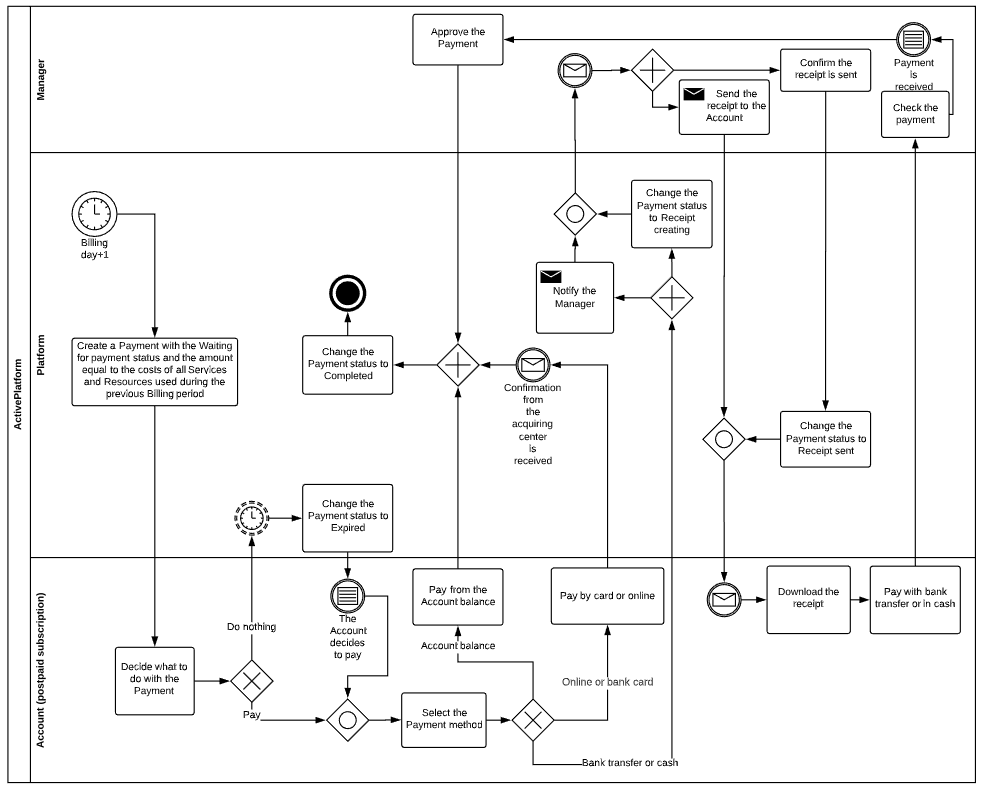Payment for rendered services
Payments for rendered services are created only for subscriptions within the Postpay model and have specifics if external management of invoices for the Postpay model is used:
Particular aspects of a payment for rendered services
- It is linked to an invoice (see Viewing details of the invoice for the Postpay charging model).
- It cannot be canceled.
- It has the payment expiration period.
- It can have the Expired status. When a payment gets this status, all the subscriptions that are linked to the same invoice get the Blocked status (see Blocking a postpaid subscription).
- It cannot be joined with other payments in the Customer Control Panel (see Join payments).
- It can be paid from the account balance.
The payment is created automatically along with the invoice closure after the end of a billing period on the second day of the next billing period. The payment amount is equal to the sum of the costs of all consumed services and resources in the previous billing period.
If an account is not completed the payment within the payment expiration period (see Creating an account class), the payment gets the Expired status. An account can complete a payment both in the Waiting for payment and Expired statuses.
Payment for rendered services life cycle
The following diagram represents the payment for rendered services life cycle. For information about the notation, see https://en.wikipedia.org/wiki/BPMN.
Specifics of external invoice management
If external management of invoices for the Postpay model by a third-party ERP system is used (see Managing invoices for the Postpay model by a third-party ERP system), the payment for rendered services life cycle has the following differences:
- The platform creates a new payment in the Pending billing status with no expiration period.
- A payment can be cancelled if a third-party ERP system has not yet approved the linked invoice (see Cancelling a payment).
- When a third-party ERP system approves the linked invoice, the payment status is changed to Waiting for payment, and the due date is set.
- If the linked invoice has been revoked, the payment returns to the Pending billing status and the due date is cleared.


